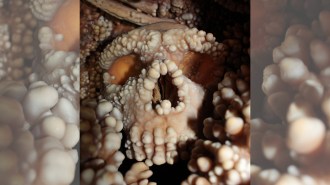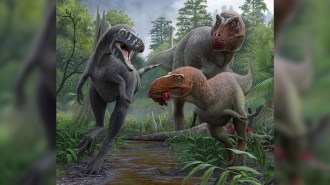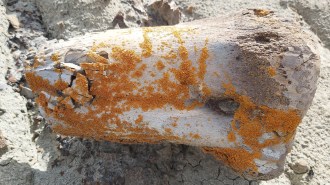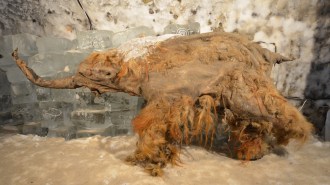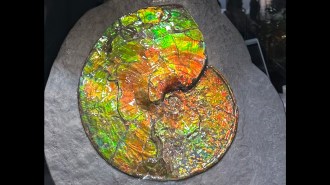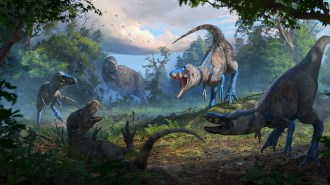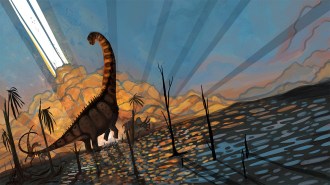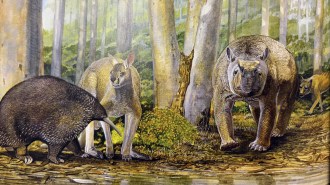Giant camel-like creatures lived thousands of years longer than once thought
Carbon-dating teeth suggests two large mammal species roamed northeastern Brazil 3,500 years ago
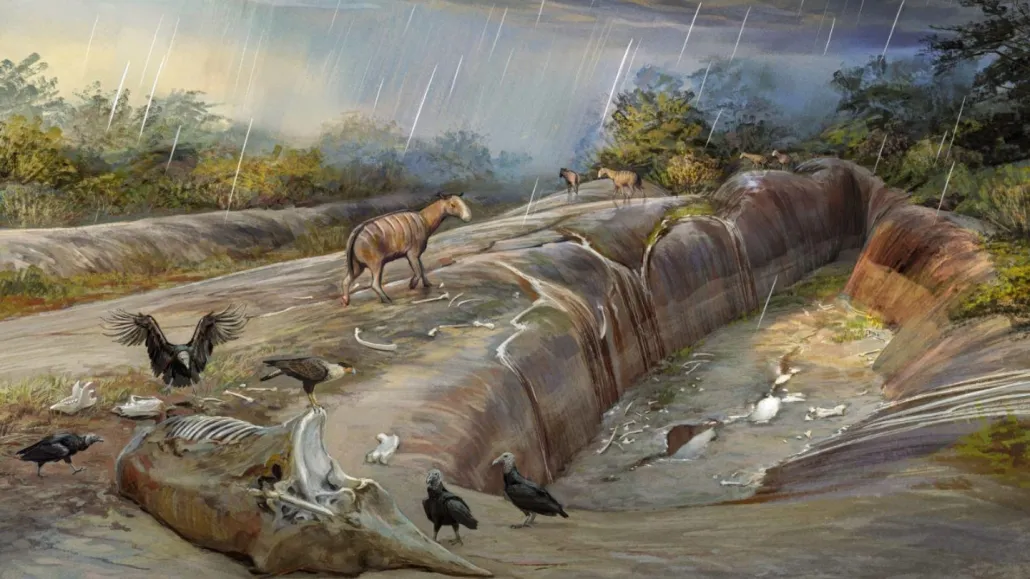
In what is now northeastern Brazil, large mammals (some illustrated) may have roamed as recently as 3,500 years ago.
Júlia d’Oliveira
Some species of megafauna might have existed for much longer than the paleontological canon suggests.
Current thinking says that ancient, large animals such as ground sloths went extinct about 11,000 years ago — at the beginning of the Holocene, the current geologic epoch. The discovery of a 4,000-year-old wooly mammoth, reported last year, helped to chip away at that story. Now, other megafauna fossil finds from South America appear to be even younger: They date from around 3,500 years ago, researchers report in the Feb. 15 Journal of South American Earth Sciences.
Geologist Fábio Faria and colleagues carbon-dated eight fragments of megafauna teeth of different species from two paleontological sites in Brazil. The ages of two of those teeth — one from the camelid Palaeolama major and the other from the camelid-like Xenorhinotherium bahiense — caught the team off guard. “With the dating, we wanted to better understand the distribution of ancient megafauna in South America. What we found — 3,500-year-old species — was totally unexpected,” says Faria, of the Universidade Federal do Rio de Janeiro.
P. major is an ancient relative of today’s llamas native to South America. X. bahiense, meanwhile, had the body of a llama and the nose of a tapir. The new finding suggests that these animals were in contact with humans — who arrived in South America between 20,000 and 17,000 years ago — for a few thousand years longer than once thought.
Previous research has noted other megafauna fossils around 6,000 and 5,000 years old in the American continent and elsewhere, says Dimila Mothé, a paleoecologist at the Universidade Federal do Estado do Rio de Janeiro who did not participate in the study. But the new finding, she says, “is astonishing and opens the door to rewrite South American history.”
The study adds more evidence to the idea that extinctions are rarely homogeneous, Mothé says. As both fossils were found at the same site in northeastern Brazil, Mothé believes the region might have been a refuge for remaining individuals of species such as P. major and X. bahiense.
“The environment in the Brazilian Intertropical Region was undergoing changes by that time,” she says. “Open fields were turning into forests, and these animals might have had less area to graze and looked for refuge in the remaining savannah.”
The animals’ extinction might not have happened by human activity or climate change alone, Mothé says. It might have been a confluence of both.
To Faria, the discovery is a change of mind. Brazilian researchers used to adopt the North American view that megafauna were wiped out by overhunting. “Following that dominant view, we were so sure our megafauna was from the beginning of the Holocene, we didn’t even date our fossils,” he says. Now, “there’s a lot of work to do.”
